The Bounty
Those remaining on Pitcairn were never found. After killing half of their comrades and all of the native men, the survivors happily mixed with the native women and lived all their days on Pitcairn. Still today the descendants of the mutineers live on the island, but that’s a different story. The PandoraThe vengeful British admiralty sent HMS Pandora to deal with the mutineers. The ship was a 35 m long frigate (keel length 29 m) built in 1779, carried 24 guns, and commanded by Captain Edward Edwards. She left England in November 1790 and rounded Cape Horn to reach the Pacific. In 1791 Pandora reached Tahiti and arrested 14 mutineers there. The prisoners were put in a cage on deck, which fittingly got the name "Pandora’s box".
The Pandora hit one of the rocks and sank. Unfortunately for them – fortunately for us. Most of the crew and prisoners survived, and continued with the ship’s boats to Batavia (present Djakarta). Later, the mutineers were finally tried in London and some of them were hanged. The Pandora shipwreck was forgotten. InvestigationPandora was discovered in 1977, as a large sand mound on the flat seabottom. The only objects sticking up were an anchor, some concretions and the large cast iron stove in the middle. Such iron stoves was a modernity, introduced on ships in the late 18th century. The ship had sunk slowly on a flat sand bottom on 30-34 m depth. After sinking, Teredo Navalis started eating the wood. At the same time, sea current started building a natural sand mound around the wreck. Eventually, the upper structure collapsed as a result of the effects of marine borers and sea movement. This fell down on the lower part, by then already stabilised by sand, which also prevented Teredo from reaching under the sand. What remains now is almost all of the lower hull below the waterline as well as objects fallen down from the upper parts. The organic materials hidden by sand are well preserved. The site is being excavated annually since 1982. It takes a long time mainly because of limited dive time on the great depth. The site is also a long way from nearest city, so a large organisation is needed. The project leader is archaeologist Peter Gesner from the Queensland Museum in Brisbane. Thanks to the depth, the hull is not broken by the sea. Thanks to the sand it’s partially preserved. The ship is a time capsule, telling us about 18th century everyday life. But the wrecksite is significant not only for its artefacts, it’s also a rare opportunity to study archaeological site formation processes. This means, trying to understand how shipwrecks disintegrate. Fieldwork 1998
The preparations were made in Townsville, Queensland. Having loaded our dive ship, the Pacific Conquest, we headed north. It took two days to reach the site. Out on open sea we discovered a stowaway, a bat. We fed it with fruit and when we finally approached land, it flew away.
Our ship was placed squarely across the Pandora. Thus two dive teams (4 divers) could independently operate from our deck. The excavating divers were stationary and worked in pairs, each using SSBA, usually made by AGA/Interspiro. That means they have air from surface as well as telephone contact with the dive supervisor John Read or Howard Smith. The sandy pits were excavated by hand fanning. Pits were stabilised by sand bags. Scuba diving with tanks needs less organisation than SSBA. So this was used for charting, maintenance, filming, when mobility was needed or simply when a diver was needed quickly. To take care of recovered artefacts, the conservator possessed an entire cabin on upper deck. Organisation 1998
The organisation in general was very thorough and professional. Besides the skipper Michael St James and project leader Peter Gesner, the crew consisted of professional archaeologists and several volunteers. On the ship is a compression chamber and a diving doctor always on board. Most of the participating divers are either archaeologists or professional divers (from oil rigs etc) volunteering on their holidays. Even the cook on board, Fred Blanc, was a real restaurant cook, volunteering on his holiday. To participate as a diver, it's necessary to have either the Australian commercial diving certificate, the British HSE or equivalent. The rather conservative (and safe) DCIEM Canadian/Australian professional diving tables are followed strictly.
A permanent Pandora exhibition is planned for at the Tropical Queensland Museum, Townsville. Coming from the cold Nordic waters, it was a true pleasure to work in a water temperature of 28° C (on 30 m depth), and I hope for a successful completion of the project. After 1998, at least 5 more yearly expeditions are planned for. by Per Åkesson, Aug 1999 Related linksReferences
|
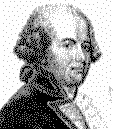 During the famous mutiny of HMS Bounty in
1789, captain Bligh and his faithful officers were forced into the ship’s boat. They
survived after sailing and rowing all the way (5800 km) to Timor, where they got help.
Meanwhile, the Bounty first reached Tahiti, where some of the mutineers decided to stay
among the beautiful women. The last mutineers, commanded by officer Fletcher Christian,
continued to the isolated island of Pitcairn, where they even sank the ship to avoid
detection.
During the famous mutiny of HMS Bounty in
1789, captain Bligh and his faithful officers were forced into the ship’s boat. They
survived after sailing and rowing all the way (5800 km) to Timor, where they got help.
Meanwhile, the Bounty first reached Tahiti, where some of the mutineers decided to stay
among the beautiful women. The last mutineers, commanded by officer Fletcher Christian,
continued to the isolated island of Pitcairn, where they even sank the ship to avoid
detection.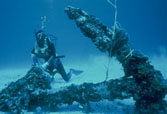 Finding no more mutineers,
Pandora headed back for England. The nearest way back was Torres Straits – the narrow and shallow
passage between
Australia and New Guinea. This is also next to the northern tip of the Great Barrier Reef.
An area full of submerged coral rocks hidden slightly below surface, with only a few
navigable passages.
Finding no more mutineers,
Pandora headed back for England. The nearest way back was Torres Straits – the narrow and shallow
passage between
Australia and New Guinea. This is also next to the northern tip of the Great Barrier Reef.
An area full of submerged coral rocks hidden slightly below surface, with only a few
navigable passages. 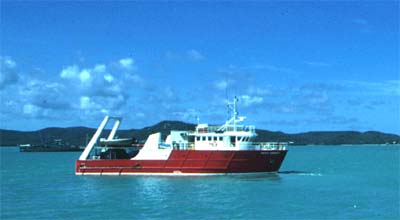
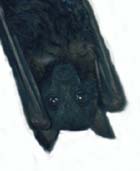
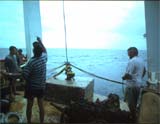
 Back to Nordic Underwater Archaeology
Back to Nordic Underwater Archaeology